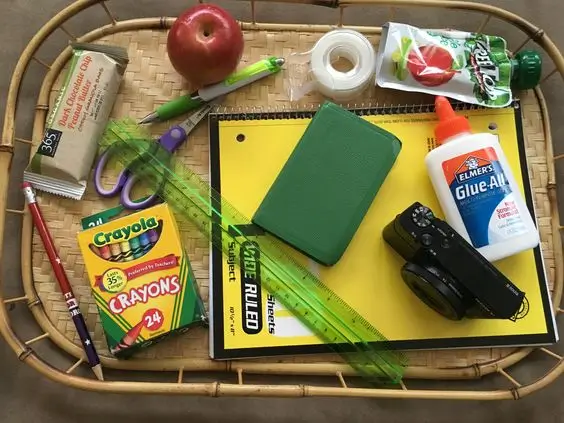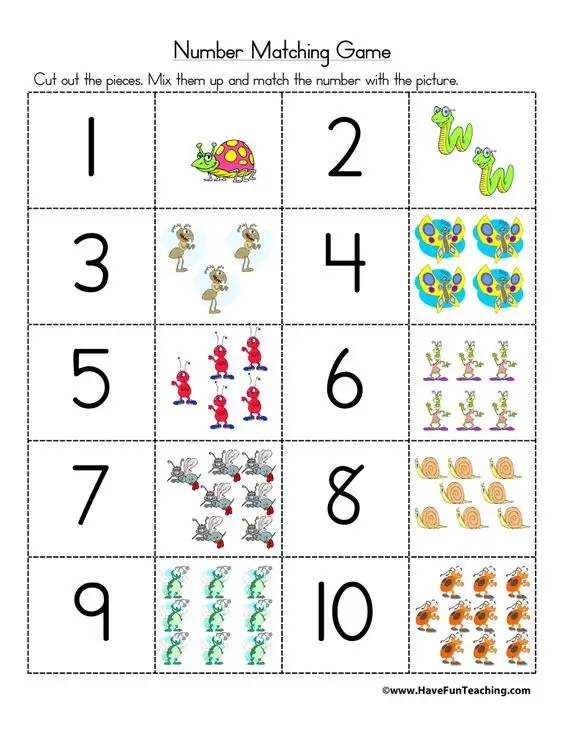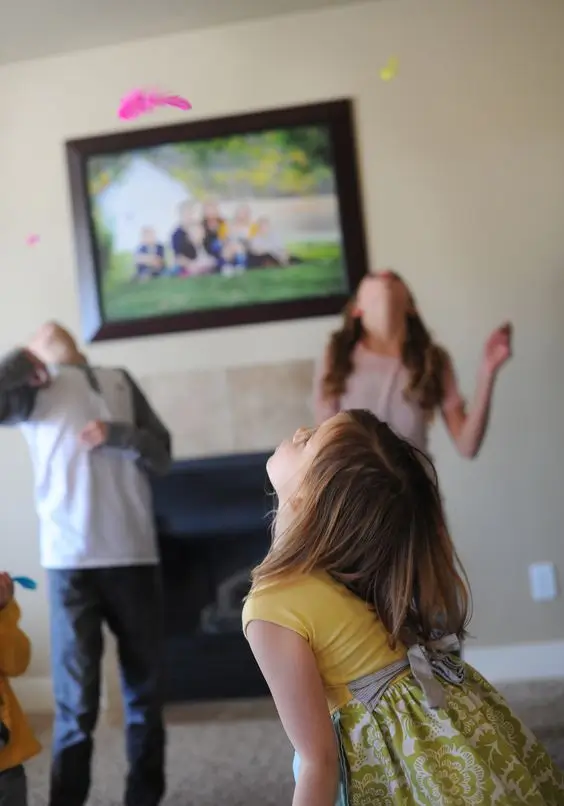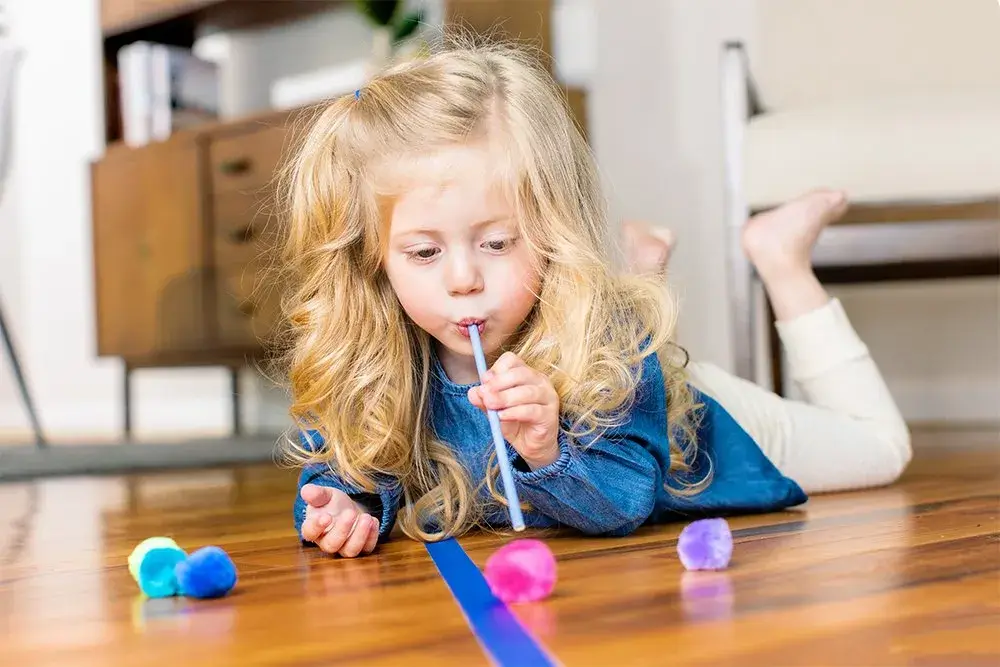Incorporating games into the classroom is an excellent way to engage students and build a positive environment. Among the many options available, Minute to Win It games are some of the most exciting. These quick games are designed to be played in 60 seconds, making them ideal for short bursts of fun and excitement.
Minute to Win It games are simple, require minimal supplies, and can be adapted to suit different age groups. They encourage quick thinking, creativity, and teamwork. Whether you use them as a brain break or a way to reward students for great behavior, these games will keep your class motivated and energized. Ready to dive into some fun? Let’s explore these 31 engaging Minute to Win It classroom games.
1. Keep It Up
Keep It Up is a game that encourages balance and hand-eye coordination. Each student receives a balloon and must keep it in the air for the entire minute. The catch? They can only use one hand to do it.
This game can get competitive, as students race to see who can keep their balloon afloat the longest. Adding an extra balloon makes it more challenging, which keeps everyone on their toes. It’s an ideal game to break the monotony and get everyone moving. Not only does Keep It Up boost focus, but it also encourages students to pay close attention to their movements. It’s a fun, fast-paced game that quickly energizes the room and keeps everyone smiling.
2. Ping Pong Bounce
Ping Pong Bounce is a game where students need to bounce ping pong balls into cups. It might sound easy, but it takes a lot of focus and patience. This game requires students to carefully aim and adjust their throw, making it both challenging and exciting.
Students take turns bouncing a ping pong ball on the table, attempting to land it inside a plastic cup. The element of competition comes in as each student tries to get as many successful bounces as possible in just one minute. This game can be made even more exciting by having students stand at different distances from the cups. The further away they stand, the harder it gets, and that challenge makes it even more fun.
3. Cup Stacking
Cup Stacking is an engaging game that requires students to build a pyramid of cups and then deconstruct it. The goal is to complete this process within 60 seconds, using focus and precision to balance each cup carefully.
Students stack cups into a pyramid, starting with four at the base and gradually working upward. Once they complete the pyramid, they have to unstack it back into a single stack. It sounds simple, but doing it fast requires a lot of focus. This game is perfect for teaching students patience, as a lack of it could lead to the entire pyramid collapsing. It’s also an excellent way to get students working on their motor skills while having a lot of fun.
4. Cookie Face
Cookie Face is a silly and entertaining game that always leads to laughter. Each student gets a cookie, which is placed on their forehead. The objective? They have to move the cookie into their mouth without using their hands.
This game requires students to use their facial muscles in creative ways, trying to wiggle the cookie into place. It’s both funny and challenging, and watching each other’s attempts can be just as entertaining as playing. Students love Cookie Face because it doesn’t require physical strength—just a lot of determination. It encourages everyone to keep trying, even when things don’t go as planned. Plus, they get to eat the cookie afterward!
5. Stack Attack
Stack Attack involves building and unstacking a tower of plastic cups, making it perfect for improving concentration. Students need to carefully stack cups into a pyramid formation and then bring them back into a single stack.
The task sounds easy, but it requires speed, precision, and control. One wrong move, and the whole pyramid might come tumbling down. Students have to remain steady and focused throughout. It’s exciting because the challenge keeps students on the edge of their seats, and they often get competitive about achieving the fastest time. Stack Attack is an excellent way to help students work on hand-eye coordination.
6. Noodle Pick-Up
In Noodle Pick-Up, students use an uncooked spaghetti noodle to pick up various small items, like pen caps. The twist is that they can’t use their hands directly—only the noodle can touch the objects.
This game tests students’ dexterity and patience, as the spaghetti noodle is quite fragile. The more delicate the student is, the more successful they’ll be in picking up items. The challenge lies in controlling the noodle without it breaking. It’s also a great way to build teamwork if played in pairs. Students can cheer each other on, making the game not only about skill but also about positive reinforcement.
7. Back-to-Back Stand
Back-to-Back Stand is a game where students must work in pairs to stand up together without using their hands. It’s a great way to get students collaborating and working as a team.
Pairs sit back-to-back on the floor with their arms linked. The challenge is to stand up without using their hands for support. It requires balance, communication, and a good sense of teamwork.
This game works well as a bonding exercise, especially for new classmates who are getting to know each other. It encourages cooperation and the use of verbal and non-verbal communication skills.
8. Hula Hoop Pass
Hula Hoop Pass is all about working together as a group. The class forms a circle, and a hula hoop is passed around without breaking hand contact.
Students stand in a circle, hold hands, and must pass the hula hoop from one student to the next by stepping through it. The challenge lies in not letting go of each other’s hands while moving the hula hoop. This game promotes collaboration, flexibility, and a lot of laughter. It’s a simple but fun way to get the entire class moving and focused on a common goal.
9. Paper Airplane Contest
The Paper Airplane Contest brings out the creative side of students as they design, fold, and throw their own paper airplanes. The goal is to see whose plane can fly the farthest.
Students are given one minute to create their paper airplane. After the time is up, everyone lines up, and each student gets a chance to throw their plane. The winner is the one whose plane flies the farthest distance.
This game not only challenges students’ creativity in constructing the airplane but also introduces them to concepts of aerodynamics in a playful way. It’s great for incorporating a little science into your classroom fun.
10. Pencil Flip
Pencil Flip is a game where students start with one pencil balanced on the back of their hand. They flip it into the air and try to catch it, adding more pencils with each successful flip.
This game requires reflexes, focus, and a steady hand. Each student starts with one pencil, and as they successfully catch it, they keep adding another. The challenge is to see how many pencils they can catch simultaneously.The excitement grows as students struggle to add more pencils, making it both challenging and fun. Pencil Flip helps develop hand-eye coordination and encourages patience.
11. Chopstick Relay
Chopstick Relay tests fine motor skills as students use chopsticks to transfer small items, like marbles or erasers, from one bowl to another. It’s a game that encourages focus and concentration.
Each student must use the chopsticks to pick up as many items as they can within a minute. The trick is that they can’t use their hands to help in any way, which adds to the challenge.This game is great for building dexterity, especially for younger students who are learning how to work with fine motor skills. It’s a challenging but rewarding experience that students love.
12. The M&M Sort
The M&M Sort is a colorful and fast-paced game where students must sort candies by color within 60 seconds. It’s a perfect game to test speed, coordination, and attention to detail.
Students receive a mixed pile of colored candies, and their task is to separate them by color as quickly as possible. The person who sorts the most in one minute wins.This game is fun and engaging, especially for younger students, who love the reward of eating their candies afterward. It’s also a simple way to reinforce color recognition for early learners.
13. Sticky Note Challenge
Sticky Note Challenge is a hilarious game that gets students covering their face with as many sticky notes as possible within a minute. It’s harder than it looks!
Each student receives a pad of sticky notes and has to stick them to their face without them falling off. The goal is to have the most sticky notes in place by the end of the minute. This game is bound to get lots of laughs as students see who can stick the most notes on. It’s a lighthearted game that provides a lot of fun and releases classroom tension.
14. Junk in the Trunk
Junk in the Trunk will get your students up and moving! The goal is to shake ping pong balls out of an empty tissue box that is tied around their waist.
Students wear the tissue box on their lower back and have to shake until they get all the balls out of the box. It’s a high-energy game that keeps everyone laughing. This game is great for warming up the class and getting rid of some excess energy. The silly movements and competitive nature of the game make it a favorite.
15. Rubber Band Shooting Gallery
Rubber Band Shooting Gallery challenges students’ precision as they shoot rubber bands to knock over plastic cups set up on a table. It requires a steady hand and careful aiming.
Students line up and take turns aiming at a stack of cups, shooting rubber bands to try to knock them over. The student who knocks over the most cups in one minute wins.This game tests students’ patience and accuracy while keeping things light and fun. It also allows them to practice focus and control, which can translate into better concentration in the classroom.
16. Memory Tray
Memory Tray is a game that sharpens students’ memory and attention to detail. A tray is set up with several small objects, which students have to observe for a few seconds.
After 10 seconds of observation, the tray is covered, and students have to write down as many items as they can remember. They only have a minute to recall all the objects.This game encourages quick thinking and helps improve short-term memory. It’s perfect as a brain break activity and can easily be adapted for any age group.

17. Alphabet Soup
Alphabet Soup is a fun, quick-thinking game that challenges students to find letters in a bowl of alphabet cereal to spell a given word. It combines vocabulary skills with fine motor skills.
Students receive a bowl of alphabet cereal and a word they need to spell. They have one minute to find the corresponding letters to complete the word. This game is great for reinforcing spelling and letter recognition, especially for younger students. It’s an engaging way to get kids excited about language skills.
18. Rapid Fire Word Chain
Rapid Fire Word Chain is a vocabulary-building game where students form a chain of words. Each word must start with the last letter of the previous word, making it a fun and challenging test of language skills.
Students start with a given word, and each participant must think of a new word that begins with the last letter of the previous word. The goal is to keep the chain going as long as possible within a minute. This game is excellent for building vocabulary and quick thinking. It also encourages students to listen carefully, as they need to be attentive to what their classmates say.
19. Number Match-Up
Number Match-Up is a memory game where students flip over cards to find matching pairs of numbers. The goal is to find as many matches as possible in a minute.
Cards are placed face down, and students take turns flipping two at a time to see if they match. If they do, they get to keep the pair; if not, the cards are turned back over. This game is perfect for practicing concentration and short-term memory. It’s a good way to reinforce number recognition for younger students while providing an element of fun.

20. Balloon Waddle
Balloon Waddle is a physical coordination game that challenges students to carry a balloon between their knees without dropping it. They must waddle to a finish line, trying to make as many trips as possible.
Students line up with a balloon between their knees and must make their way to a designated spot and back without using their hands. The catch is that if the balloon drops, they must start again. This game is full of laughter as students try to keep their balance while waddling. It’s a fantastic way to get the class moving and burning off some energy.
21. Penny Stack
Penny Stack challenges students to build a tower of pennies, testing their fine motor skills and patience. Each student has one minute to stack as many pennies as possible.
The key to winning is maintaining a steady hand, as the higher the stack, the more likely it is to tip over. If the tower collapses, they have to start again. This game is great for focusing on precision and hand-eye coordination. The competitive nature of stacking also encourages students to be persistent even when things don’t go their way.
22. Candy Wrapper Twist
Candy Wrapper Twist is a hilarious game in which students try to unwrap candies while wearing gloves. It’s challenging due to the added difficulty of not being able to feel the candy properly.
Students each put on gloves and must unwrap as many candies as they can in one minute. The thicker the gloves, the harder it becomes, which adds an extra layer of challenge. This game is ideal for developing patience and motor skills, especially when dexterity is limited. Plus, the reward of eating candy at the end makes it even more appealing.

23. Feather Float
Feather Float is all about keeping a feather in the air by blowing on it. It’s a lighthearted game that combines concentration with physical coordination.
Each student is given a feather and must keep it floating in the air for an entire minute. They can use only their breath to keep it up, which makes it surprisingly challenging. This game encourages students to be aware of their movements and control their breath. It’s also entertaining, as the feather often flies in unexpected directions, leading to lots of laughs.

24. Paper Plane Distance
Paper Plane Distance is a simple but competitive game that encourages creativity. Students fold a paper airplane and throw it to see whose plane flies the farthest.
In just one minute, students must create the best possible paper airplane. After construction, everyone lines up and launches their planes, seeing whose plane goes the furthest distance.This game is perfect for sparking interest in design and physics concepts like aerodynamics, all while being a lot of fun. It also helps boost creativity and problem-solving skills.

25. Blindfolded Drawing
Blindfolded Drawing is a fun way for students to express creativity while being challenged. Students must draw simple objects while blindfolded, and their teammates have to guess what they’re drawing.
One student is blindfolded and given a marker and paper, and they have one minute to draw an object such as a house, a flower, or a car. The other students guess what it is before time runs out. This game is perfect for team bonding and getting students to rely on their non-verbal communication skills. It’s fun, often leads to hilarious results, and encourages creativity.
26. Spoon and Marble Relay
Spoon and Marble Relay challenges students’ balance as they carry a marble on a spoon. The objective is to walk from one point to another without dropping the marble.
Each student gets a spoon and a marble, and they have to carry the marble to the finish line and back without letting it fall. If they drop the marble, they must start over. This game is ideal for practicing patience and steady hand control. It’s also a good way to get students to focus on a task while moving, which helps improve coordination.
27. Stack ‘Em High
Stack ‘Em High is all about building the tallest tower possible using plastic cups in one minute. It’s a simple but engaging game that encourages careful hand movements and planning.
Students are each given a set of cups and must stack them as high as possible within the allotted time. If the tower collapses, they have to start again. This game helps develop patience and motor skills. It’s an exciting way to challenge students to think ahead and strategize the best way to make their tower stable.
28. Thread the Needle
Thread the Needle is a game of precision that requires students to thread a needle as many times as they can within one minute. It’s a great test of fine motor skills and patience.
Each student is given a needle and thread and must try to thread it as many times as possible. The small size of the needle and thread makes it a challenging task that requires a steady hand.
This game is particularly useful for teaching students the importance of focusing on small tasks. It also helps build patience, as it can take several attempts before succeeding.
29. Marshmallow Toss
Marshmallow Toss is a lighthearted game in which students try to toss marshmallows into a cup held by their partner. It’s a fun way to test aim and coordination.
One student stands with a cup, while their partner, from a distance, attempts to toss marshmallows into the cup. The goal is to catch as many marshmallows as possible in the given time.
This game encourages teamwork and coordination between partners. It’s a great way to get students working together, all while sharing a lot of laughs.
30. Straw Race
In Straw Race, students must use a straw to blow small items, like cotton balls, across a table to a designated finish line. It’s a fun and simple way to practice breath control.
Each student gets a straw and a small item, and the goal is to move it across the table by blowing through the straw. The person who gets their item the farthest in a minute wins.
This game is entertaining and helps develop breath control. It’s also an excellent way for students to practice patience, as they need to use their breath effectively to succeed.

31. Chopstick Challenge
Chopstick Challenge involves students using chopsticks to pick up small items, like marshmallows or candies, and placing them in a cup. It’s a game that tests dexterity and patience.
Students are given a pair of chopsticks and a pile of small items. Within 60 seconds, they must pick up as many items as possible and drop them into a cup. The more they get, the better their score. This game helps students develop fine motor skills and hand-eye coordination. It’s both challenging and rewarding, especially when students manage to fill their cup within the time limit.
Conclusion: A Classroom Full of Energy and Fun
Incorporating these 31 Minute to Win It games into your classroom will create a vibrant, fun atmosphere where students feel excited to participate. These games are perfect for brain breaks, team-building, and just adding a burst of energy to your routine. Whether you’re aiming for collaborative activities or just a bit of friendly competition, Minute to Win It games are sure to be a hit. So give them a try, and watch as your students learn, bond, and have a fantastic time togeth